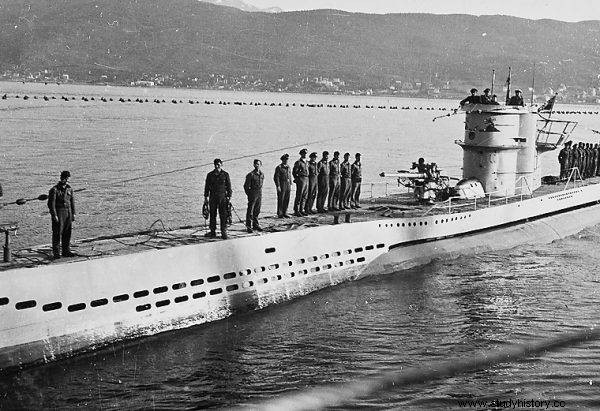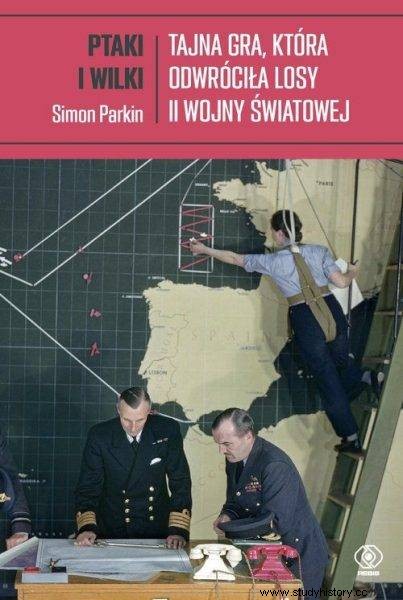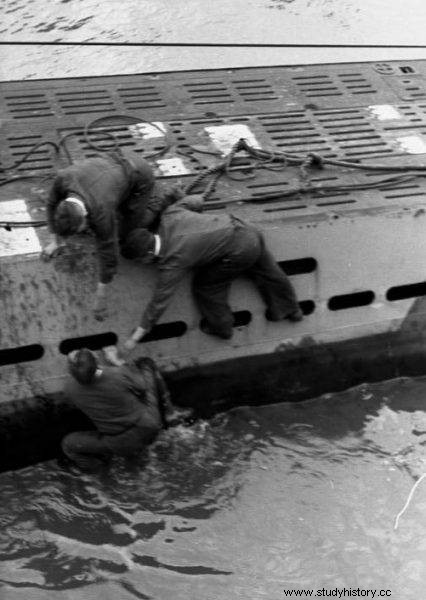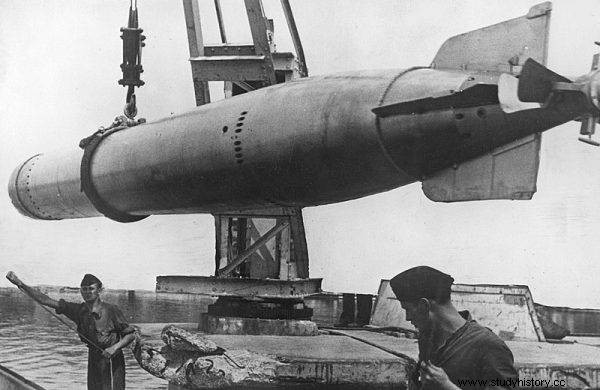During the Second World War, the U-Boats had the highest mortality rates of all troops in the air, on land and at sea, on both sides of the conflict. The average life span of a seaman was 50 days. The service of the submarines was not easy and pleasant. What was the service like on board a Nazi submarine?
The interior of the U-Boat was already smelly damp after six days at sea. The U-48 left Lorient on the evening of September 8, 1940. Thirty-eight sailors firmly believed that they were fully prepared for the underwater life.
The men, some of whom were still teenagers and almost all unmarried men, had a strict physical preparation behind them. They were taught the difficult art of underwater navigation, they also learned the technology of building U-boats.
Only those who turned out to be able to endure the claustrophobic crampedness of steel hulls and the humiliation of being chained to the rail on the deck, as the ship cut the surface of the water like a heavy motorboat .
As helpless as a U-Boot
Even so, there was no way to prepare you for the grim reality of submarines:wet tables, perpetually damp towels, and voracious lice.
Paradoxically, it was only on the surface that the U-Boats felt the greatest peace, as they raced at full speed powered by German diesel engines, which could finally draw air. Underwater, the ship slowed down and became vulnerable, forced to use electric motors which could only be able to gently push him forward for a relatively short time. Then I had to surface to recharge my dead batteries.

The service aboard the U-boat was difficult - and threatened with quick death.
Inside the U-48's hull, no crew member had a place. They changed into bunks, which still radiated the warmth of the previous tenant, both pleasant and repulsive. Those who were light sleepers were awakened by the constant thudding of pistons, the sighs and clank of intake valves, and the gurgling of the bilge pumps.
The dormant mind had to learn to separate all this hurgot from the signs of danger the siren was announcing with the Achtung! signal. .
The land of whispers
For days there was boredom, the dead time was filled with playing chess and writing letters. One of the sailors took with him a goldfish, which was baptized with the name Fridolin, to receive them company under the waves. At any moment, however, this lazy atmosphere could change.
The U-Boat, spotted by the escort ship, plunged as deep as the gauges would allow. This maneuver required a great deal of delicacy ; too deep, and under the pressure of the water the rivets would shoot out of their sockets like revolver bullets . Too shallow and the ship would be within the shockwave of the attacker's depth charge, explosive barrels dropped off the deck into the sea and programmed to detonate at various depths.

The text is an excerpt from Simon Parkin's book “Birds and Wolves. The secret game that turned the fate of World War II ", which has just been released by the Rebis publishing house.
The submerged U-Boat waited for the danger to pass. When the ship was chasing one of the royal corvettes (many of them were given, quite perversely, names derived from English flowers) or destroyers, the noise resembled the rumble heard by a man lying between the tracks under a passing train. On these ships, the captain's orders were shouted out to shout over the wind. On U-Boats, meanwhile, after turning off the engines, you were entering the realm of whispers.
"Kill or Die"
Nobody knew yet that it was here in the depths that most submarines would be killed. During World War II, U-boats had the highest mortality rates of all troops in the air, land and sea on both sides of the conflict.
British planes dropped leaflets over Germany, warning potential recruits that for each of the 2,000 German submarines currently leading the lives of British prisoners of war, five more died at sea . In neutral countries, insurance companies estimated the average life of a seaman on a submarine to be fifty days.
These were not numbers exaggerated by propaganda. Of the thirty-nine thousand men who served on submarines during World War II, seventy percent died in combat. In contrast, only six percent of the British Army's troops suffered the same fate.

In the Allied code, U-boats were called "caravans"
In the early 1940s, the risk of death on board the U-boat was higher than on any other existing means of transport. In the Allied code, U-boats were called "caravans" . The chances of surviving the twelve patrol missions necessary for a U-Boat seaman to apply for frontline discharge were slim.
As people began to understand what they signed up for, the "kill or die" attitude of the U-boat crews grew stronger. Compassion for the enemy, be it a man, a woman or a child, could cost you your life (...).
Underwater wunderwaffe
The U-48 was sixty-six and a half meters long, six and two tenths wide, and had a top speed of almost eighteen knots on the surface, which allowed it to outrun most of its victims.
Type VIIB U-boats were perfectly suited to combat in the Atlantic due to their speed of descent and enviable mobility. There was also an impossible cramped atmosphere within them; the entire thirty-eight crew used one toilet - the other was filled to the ceiling with cans and other travel supplies.
There were no separate rooms on board, just a long corridor resembling a railway car, constantly crowded and completely depriving you of privacy. The smell in the changing rooms was ineptly masked with a variety of colognes.

In the belly of the U-48 there were fourteen torpedoes, called by the crew "eels".
There were fourteen torpedoes in the belly of the U-48, called by the crew "eels" . The seven-meter long missiles, inseparable companions of the crew, were stored in compartments tucked under the floor plates and piled along the bulkhead. Their bodies were covered with drawings, captions, important dates or just scribbles.
Until one or two "eels" had been fired, the inhabitants did not even have enough room to change upright; the more they wanted to find and attack the enemy ship as soon as possible.
By the end of the war, the U-48 had established itself as the most successful U-boat in Hitler's submarine fleet, sending at least fifty-five ships to the bottom before being sunk by its own crew in the declining period of the conflict.
Source:
The text is an excerpt from Simon Parkin's book “Birds and Wolves. The secret game that turned the fate of World War II ", which has just been released by the Rebis publishing house.
